-
EXECUTIVE SUMMARY
-
1.1.
-
Market Overview
-
Key Findings
-
Market Segmentation
-
1.4.
-
Competitive Landscape
-
Challenges and Opportunities
-
Future
-
Outlook
-
\r\n
-
MARKET INTRODUCTION
-
Definition
- Research Objective
- Assumption
-
2.2.
-
Scope of the study
-
2.2.3.
-
Limitations
-
RESEARCH METHODOLOGY
-
Overview
-
Data Mining
-
Secondary Research
-
Primary Research
- Primary Interviews
- Breakdown of Primary Respondents
-
and Information Gathering Process
-
Forecasting Model
-
Market Size Estimation
- Bottom-Up
- Top-Down Approach
-
Approach
-
Data Triangulation
-
3.8.
-
Validation
-
\r\n
-
MARKET DYNAMICS
-
Overview
-
4.2.
-
Drivers
-
Restraints
-
Opportunities
-
MARKET FACTOR ANALYSIS
-
Value chain Analysis
-
Porter's Five Forces Analysis
- Bargaining Power of Buyers
- Threat of Substitutes
- Intensity
-
5.2.1.
-
Bargaining Power of Suppliers
-
5.2.3.
-
Threat of New Entrants
-
of Rivalry
-
COVID-19 Impact Analysis
- Market Impact Analysis
- Regional Impact
- Opportunity and Threat Analysis
-
\r\n
-
WOOD COATINGS MARKET, BY APPLICATION (USD BILLION)
-
Furniture
-
Cabinetry
-
Flooring
-
Doors
-
Marine
-
WOOD COATINGS MARKET, BY PRODUCT TYPE (USD BILLION)
-
Water-Based
-
Coatings
-
Solvent-Based Coatings
-
UV-Cured Coatings
-
7.4.
-
Polyurethane Coatings
-
Lacquers
-
WOOD COATINGS MARKET, BY FORMULATION
-
(USD BILLION)
-
Acrylic
-
Alkyd
-
Nitrocellulose
-
Polyester
-
Epoxy
-
WOOD COATINGS MARKET, BY END USE (USD
-
BILLION)
-
Residential
-
Commercial
-
Industrial
-
WOOD COATINGS MARKET, BY REGIONAL (USD BILLION)
-
North America
- US
- Canada
-
Europe
- Germany
- UK
- France
- Russia
- Italy
- Rest of Europe
-
10.2.6.
-
Spain
-
APAC
- China
- Japan
- South Korea
- Malaysia
- Indonesia
- Rest of APAC
-
10.3.2.
-
India
-
10.3.6.
-
Thailand
-
South America
- Brazil
- Mexico
- Argentina
-
10.4.4.
-
Rest of South America
-
MEA
- GCC Countries
- Rest of MEA
-
10.5.2.
-
South Africa
-
\r\n
-
COMPETITIVE LANDSCAPE
-
Overview
-
Competitive Analysis
-
Market share Analysis
-
Major Growth Strategy in the Wood Coatings Market
-
Competitive
-
Benchmarking
-
Leading Players in Terms of Number of Developments in the
-
Wood Coatings Market
-
Key developments and growth strategies
- Merger & Acquisitions
- Joint Ventures
-
11.7.1.
-
New Product Launch/Service Deployment
-
Major Players Financial Matrix
- Major Players R&D Expenditure. 2023
-
11.8.1.
-
Sales and Operating Income
-
COMPANY PROFILES
-
SherwinWilliams
- Financial Overview
- Products Offered
- Key Developments
- SWOT
- Key Strategies
-
Analysis
-
Beckers Group
- Financial
- Products Offered
- Key Developments
- Key Strategies
-
Overview
-
12.2.4.
-
SWOT Analysis
-
Nippon Paint
- Products Offered
- Key Developments
- SWOT Analysis
- Key Strategies
-
12.3.1.
-
Financial Overview
-
RPM International
- Financial Overview
- Products Offered
- Key
- SWOT Analysis
- Key Strategies
- Financial Overview
- Products Offered
- Key Developments
- SWOT Analysis
- Key Strategies
-
Developments
-
12.5.
-
Asian Paints
-
Axalta Coating Systems
- Financial Overview
- Key Developments
- SWOT Analysis
- Key Strategies
-
12.6.2.
-
Products Offered
-
Valspar
- Financial Overview
- Products Offered
- Key Developments
- SWOT Analysis
- Key Strategies
-
Benjamin Moore
- Financial
- Products Offered
- Key Developments
- Key Strategies
-
Overview
-
12.8.4.
-
SWOT Analysis
-
Tikkurila
- Financial
- Products Offered
- Key Developments
- Key Strategies
-
Overview
-
12.9.4.
-
SWOT Analysis
-
BASF
- Financial
- Products Offered
- Key Developments
- Key Strategies
-
Overview
-
12.10.4.
-
SWOT Analysis
-
PPG Industries
- Products Offered
- Key Developments
- SWOT Analysis
- Key Strategies
-
12.11.1.
-
Financial Overview
-
Kansai Paint
- Financial Overview
- Products Offered
- SWOT Analysis
- Key Strategies
-
12.12.3.
-
Key Developments
-
AkzoNobel
- Financial Overview
- Products Offered
- Key Developments
- SWOT Analysis
- Key
-
Strategies
-
Hempel
- Financial Overview
- Key Developments
- SWOT Analysis
- Key Strategies
-
12.14.2.
-
Products Offered
-
APPENDIX
-
References
-
13.2.
-
Related Reports
-
LIST OF TABLES
-
\r\nTABLE 1. LIST OF ASSUMPTIONS
-
NORTH AMERICA WOOD COATINGS MARKET SIZE ESTIMATES & FORECAST, BY
-
APPLICATION, 2019-2035 (USD BILLIONS)
-
NORTH AMERICA WOOD COATINGS
-
MARKET SIZE ESTIMATES & FORECAST, BY PRODUCT TYPE, 2019-2035 (USD BILLIONS)
-
NORTH AMERICA WOOD COATINGS MARKET SIZE ESTIMATES & FORECAST,
-
BY FORMULATION, 2019-2035 (USD BILLIONS)
-
NORTH AMERICA WOOD COATINGS
-
MARKET SIZE ESTIMATES & FORECAST, BY END USE, 2019-2035 (USD BILLIONS)
-
TABLE
-
NORTH AMERICA WOOD COATINGS MARKET SIZE ESTIMATES & FORECAST, BY REGIONAL,
-
US WOOD COATINGS MARKET SIZE ESTIMATES &
-
FORECAST, BY APPLICATION, 2019-2035 (USD BILLIONS)
-
US WOOD COATINGS
-
MARKET SIZE ESTIMATES & FORECAST, BY PRODUCT TYPE, 2019-2035 (USD BILLIONS)
-
US WOOD COATINGS MARKET SIZE ESTIMATES & FORECAST, BY FORMULATION,
-
US WOOD COATINGS MARKET SIZE ESTIMATES
-
& FORECAST, BY END USE, 2019-2035 (USD BILLIONS)
-
US WOOD COATINGS
-
MARKET SIZE ESTIMATES & FORECAST, BY REGIONAL, 2019-2035 (USD BILLIONS)
-
CANADA WOOD COATINGS MARKET SIZE ESTIMATES & FORECAST, BY APPLICATION,
-
CANADA WOOD COATINGS MARKET SIZE ESTIMATES
-
& FORECAST, BY PRODUCT TYPE, 2019-2035 (USD BILLIONS)
-
CANADA
-
WOOD COATINGS MARKET SIZE ESTIMATES & FORECAST, BY FORMULATION, 2019-2035 (USD
-
BILLIONS)
-
CANADA WOOD COATINGS MARKET SIZE ESTIMATES & FORECAST,
-
BY END USE, 2019-2035 (USD BILLIONS)
-
CANADA WOOD COATINGS MARKET
-
SIZE ESTIMATES & FORECAST, BY REGIONAL, 2019-2035 (USD BILLIONS)
-
TABLE
-
EUROPE WOOD COATINGS MARKET SIZE ESTIMATES & FORECAST, BY APPLICATION, 2019-2035
-
(USD BILLIONS)
-
EUROPE WOOD COATINGS MARKET SIZE ESTIMATES &
-
FORECAST, BY PRODUCT TYPE, 2019-2035 (USD BILLIONS)
-
EUROPE WOOD
-
COATINGS MARKET SIZE ESTIMATES & FORECAST, BY FORMULATION, 2019-2035 (USD BILLIONS)
-
EUROPE WOOD COATINGS MARKET SIZE ESTIMATES & FORECAST, BY END
-
USE, 2019-2035 (USD BILLIONS)
-
EUROPE WOOD COATINGS MARKET SIZE ESTIMATES
-
& FORECAST, BY REGIONAL, 2019-2035 (USD BILLIONS)
-
GERMANY WOOD
-
COATINGS MARKET SIZE ESTIMATES & FORECAST, BY APPLICATION, 2019-2035 (USD BILLIONS)
-
GERMANY WOOD COATINGS MARKET SIZE ESTIMATES & FORECAST, BY PRODUCT
-
TYPE, 2019-2035 (USD BILLIONS)
-
GERMANY WOOD COATINGS MARKET SIZE
-
ESTIMATES & FORECAST, BY FORMULATION, 2019-2035 (USD BILLIONS)
-
TABLE 25.
-
GERMANY WOOD COATINGS MARKET SIZE ESTIMATES & FORECAST, BY END USE, 2019-2035
-
(USD BILLIONS)
-
GERMANY WOOD COATINGS MARKET SIZE ESTIMATES &
-
FORECAST, BY REGIONAL, 2019-2035 (USD BILLIONS)
-
UK WOOD COATINGS
-
MARKET SIZE ESTIMATES & FORECAST, BY APPLICATION, 2019-2035 (USD BILLIONS)
-
UK WOOD COATINGS MARKET SIZE ESTIMATES & FORECAST, BY PRODUCT TYPE,
-
UK WOOD COATINGS MARKET SIZE ESTIMATES
-
& FORECAST, BY FORMULATION, 2019-2035 (USD BILLIONS)
-
UK WOOD
-
COATINGS MARKET SIZE ESTIMATES & FORECAST, BY END USE, 2019-2035 (USD BILLIONS)
-
UK WOOD COATINGS MARKET SIZE ESTIMATES & FORECAST, BY REGIONAL,
-
FRANCE WOOD COATINGS MARKET SIZE ESTIMATES
-
& FORECAST, BY APPLICATION, 2019-2035 (USD BILLIONS)
-
FRANCE
-
WOOD COATINGS MARKET SIZE ESTIMATES & FORECAST, BY PRODUCT TYPE, 2019-2035 (USD
-
BILLIONS)
-
FRANCE WOOD COATINGS MARKET SIZE ESTIMATES & FORECAST,
-
BY FORMULATION, 2019-2035 (USD BILLIONS)
-
FRANCE WOOD COATINGS MARKET
-
SIZE ESTIMATES & FORECAST, BY END USE, 2019-2035 (USD BILLIONS)
-
TABLE
-
FRANCE WOOD COATINGS MARKET SIZE ESTIMATES & FORECAST, BY REGIONAL, 2019-2035
-
(USD BILLIONS)
-
RUSSIA WOOD COATINGS MARKET SIZE ESTIMATES &
-
FORECAST, BY APPLICATION, 2019-2035 (USD BILLIONS)
-
RUSSIA WOOD COATINGS
-
MARKET SIZE ESTIMATES & FORECAST, BY PRODUCT TYPE, 2019-2035 (USD BILLIONS)
-
RUSSIA WOOD COATINGS MARKET SIZE ESTIMATES & FORECAST, BY FORMULATION,
-
RUSSIA WOOD COATINGS MARKET SIZE ESTIMATES
-
& FORECAST, BY END USE, 2019-2035 (USD BILLIONS)
-
RUSSIA WOOD
-
COATINGS MARKET SIZE ESTIMATES & FORECAST, BY REGIONAL, 2019-2035 (USD BILLIONS)
-
ITALY WOOD COATINGS MARKET SIZE ESTIMATES & FORECAST, BY APPLICATION,
-
ITALY WOOD COATINGS MARKET SIZE ESTIMATES
-
& FORECAST, BY PRODUCT TYPE, 2019-2035 (USD BILLIONS)
-
ITALY
-
WOOD COATINGS MARKET SIZE ESTIMATES & FORECAST, BY FORMULATION, 2019-2035 (USD
-
BILLIONS)
-
ITALY WOOD COATINGS MARKET SIZE ESTIMATES & FORECAST,
-
BY END USE, 2019-2035 (USD BILLIONS)
-
ITALY WOOD COATINGS MARKET
-
SIZE ESTIMATES & FORECAST, BY REGIONAL, 2019-2035 (USD BILLIONS)
-
TABLE
-
SPAIN WOOD COATINGS MARKET SIZE ESTIMATES & FORECAST, BY APPLICATION, 2019-2035
-
(USD BILLIONS)
-
SPAIN WOOD COATINGS MARKET SIZE ESTIMATES & FORECAST,
-
BY PRODUCT TYPE, 2019-2035 (USD BILLIONS)
-
SPAIN WOOD COATINGS MARKET
-
SIZE ESTIMATES & FORECAST, BY FORMULATION, 2019-2035 (USD BILLIONS)
-
TABLE
-
SPAIN WOOD COATINGS MARKET SIZE ESTIMATES & FORECAST, BY END USE, 2019-2035
-
(USD BILLIONS)
-
SPAIN WOOD COATINGS MARKET SIZE ESTIMATES & FORECAST,
-
BY REGIONAL, 2019-2035 (USD BILLIONS)
-
REST OF EUROPE WOOD COATINGS
-
MARKET SIZE ESTIMATES & FORECAST, BY APPLICATION, 2019-2035 (USD BILLIONS)
-
REST OF EUROPE WOOD COATINGS MARKET SIZE ESTIMATES & FORECAST, BY
-
PRODUCT TYPE, 2019-2035 (USD BILLIONS)
-
REST OF EUROPE WOOD COATINGS
-
MARKET SIZE ESTIMATES & FORECAST, BY FORMULATION, 2019-2035 (USD BILLIONS)
-
REST OF EUROPE WOOD COATINGS MARKET SIZE ESTIMATES & FORECAST, BY
-
END USE, 2019-2035 (USD BILLIONS)
-
REST OF EUROPE WOOD COATINGS MARKET
-
SIZE ESTIMATES & FORECAST, BY REGIONAL, 2019-2035 (USD BILLIONS)
-
TABLE
-
APAC WOOD COATINGS MARKET SIZE ESTIMATES & FORECAST, BY APPLICATION, 2019-2035
-
(USD BILLIONS)
-
APAC WOOD COATINGS MARKET SIZE ESTIMATES & FORECAST,
-
BY PRODUCT TYPE, 2019-2035 (USD BILLIONS)
-
APAC WOOD COATINGS MARKET
-
SIZE ESTIMATES & FORECAST, BY FORMULATION, 2019-2035 (USD BILLIONS)
-
TABLE
-
APAC WOOD COATINGS MARKET SIZE ESTIMATES & FORECAST, BY END USE, 2019-2035
-
(USD BILLIONS)
-
APAC WOOD COATINGS MARKET SIZE ESTIMATES & FORECAST,
-
BY REGIONAL, 2019-2035 (USD BILLIONS)
-
CHINA WOOD COATINGS MARKET
-
SIZE ESTIMATES & FORECAST, BY APPLICATION, 2019-2035 (USD BILLIONS)
-
TABLE
-
CHINA WOOD COATINGS MARKET SIZE ESTIMATES & FORECAST, BY PRODUCT TYPE, 2019-2035
-
(USD BILLIONS)
-
CHINA WOOD COATINGS MARKET SIZE ESTIMATES & FORECAST,
-
BY FORMULATION, 2019-2035 (USD BILLIONS)
-
CHINA WOOD COATINGS MARKET
-
SIZE ESTIMATES & FORECAST, BY END USE, 2019-2035 (USD BILLIONS)
-
TABLE
-
CHINA WOOD COATINGS MARKET SIZE ESTIMATES & FORECAST, BY REGIONAL, 2019-2035
-
(USD BILLIONS)
-
INDIA WOOD COATINGS MARKET SIZE ESTIMATES & FORECAST,
-
BY APPLICATION, 2019-2035 (USD BILLIONS)
-
INDIA WOOD COATINGS MARKET
-
SIZE ESTIMATES & FORECAST, BY PRODUCT TYPE, 2019-2035 (USD BILLIONS)
-
TABLE
-
INDIA WOOD COATINGS MARKET SIZE ESTIMATES & FORECAST, BY FORMULATION, 2019-2035
-
(USD BILLIONS)
-
INDIA WOOD COATINGS MARKET SIZE ESTIMATES & FORECAST,
-
BY END USE, 2019-2035 (USD BILLIONS)
-
INDIA WOOD COATINGS MARKET
-
SIZE ESTIMATES & FORECAST, BY REGIONAL, 2019-2035 (USD BILLIONS)
-
TABLE
-
JAPAN WOOD COATINGS MARKET SIZE ESTIMATES & FORECAST, BY APPLICATION, 2019-2035
-
(USD BILLIONS)
-
JAPAN WOOD COATINGS MARKET SIZE ESTIMATES & FORECAST,
-
BY PRODUCT TYPE, 2019-2035 (USD BILLIONS)
-
JAPAN WOOD COATINGS MARKET
-
SIZE ESTIMATES & FORECAST, BY FORMULATION, 2019-2035 (USD BILLIONS)
-
TABLE
-
JAPAN WOOD COATINGS MARKET SIZE ESTIMATES & FORECAST, BY END USE, 2019-2035
-
(USD BILLIONS)
-
JAPAN WOOD COATINGS MARKET SIZE ESTIMATES & FORECAST,
-
BY REGIONAL, 2019-2035 (USD BILLIONS)
-
SOUTH KOREA WOOD COATINGS
-
MARKET SIZE ESTIMATES & FORECAST, BY APPLICATION, 2019-2035 (USD BILLIONS)
-
SOUTH KOREA WOOD COATINGS MARKET SIZE ESTIMATES & FORECAST, BY PRODUCT
-
TYPE, 2019-2035 (USD BILLIONS)
-
SOUTH KOREA WOOD COATINGS MARKET
-
SIZE ESTIMATES & FORECAST, BY FORMULATION, 2019-2035 (USD BILLIONS)
-
TABLE
-
SOUTH KOREA WOOD COATINGS MARKET SIZE ESTIMATES & FORECAST, BY END USE,
-
SOUTH KOREA WOOD COATINGS MARKET SIZE ESTIMATES
-
& FORECAST, BY REGIONAL, 2019-2035 (USD BILLIONS)
-
MALAYSIA WOOD
-
COATINGS MARKET SIZE ESTIMATES & FORECAST, BY APPLICATION, 2019-2035 (USD BILLIONS)
-
MALAYSIA WOOD COATINGS MARKET SIZE ESTIMATES & FORECAST, BY
-
PRODUCT TYPE, 2019-2035 (USD BILLIONS)
-
MALAYSIA WOOD COATINGS MARKET
-
SIZE ESTIMATES & FORECAST, BY FORMULATION, 2019-2035 (USD BILLIONS)
-
TABLE
-
MALAYSIA WOOD COATINGS MARKET SIZE ESTIMATES & FORECAST, BY END USE, 2019-2035
-
(USD BILLIONS)
-
MALAYSIA WOOD COATINGS MARKET SIZE ESTIMATES &
-
FORECAST, BY REGIONAL, 2019-2035 (USD BILLIONS)
-
THAILAND WOOD COATINGS
-
MARKET SIZE ESTIMATES & FORECAST, BY APPLICATION, 2019-2035 (USD BILLIONS)
-
THAILAND WOOD COATINGS MARKET SIZE ESTIMATES & FORECAST, BY PRODUCT
-
TYPE, 2019-2035 (USD BILLIONS)
-
THAILAND WOOD COATINGS MARKET SIZE
-
ESTIMATES & FORECAST, BY FORMULATION, 2019-2035 (USD BILLIONS)
-
TABLE 90.
-
THAILAND WOOD COATINGS MARKET SIZE ESTIMATES & FORECAST, BY END USE, 2019-2035
-
(USD BILLIONS)
-
THAILAND WOOD COATINGS MARKET SIZE ESTIMATES &
-
FORECAST, BY REGIONAL, 2019-2035 (USD BILLIONS)
-
INDONESIA WOOD COATINGS
-
MARKET SIZE ESTIMATES & FORECAST, BY APPLICATION, 2019-2035 (USD BILLIONS)
-
INDONESIA WOOD COATINGS MARKET SIZE ESTIMATES & FORECAST, BY PRODUCT
-
TYPE, 2019-2035 (USD BILLIONS)
-
INDONESIA WOOD COATINGS MARKET SIZE
-
ESTIMATES & FORECAST, BY FORMULATION, 2019-2035 (USD BILLIONS)
-
TABLE 95.
-
INDONESIA WOOD COATINGS MARKET SIZE ESTIMATES & FORECAST, BY END USE, 2019-2035
-
(USD BILLIONS)
-
INDONESIA WOOD COATINGS MARKET SIZE ESTIMATES &
-
FORECAST, BY REGIONAL, 2019-2035 (USD BILLIONS)
-
REST OF APAC WOOD
-
COATINGS MARKET SIZE ESTIMATES & FORECAST, BY APPLICATION, 2019-2035 (USD BILLIONS)
-
REST OF APAC WOOD COATINGS MARKET SIZE ESTIMATES & FORECAST,
-
BY PRODUCT TYPE, 2019-2035 (USD BILLIONS)
-
REST OF APAC WOOD COATINGS
-
MARKET SIZE ESTIMATES & FORECAST, BY FORMULATION, 2019-2035 (USD BILLIONS)
-
REST OF APAC WOOD COATINGS MARKET SIZE ESTIMATES & FORECAST, BY
-
END USE, 2019-2035 (USD BILLIONS)
-
REST OF APAC WOOD COATINGS MARKET
-
SIZE ESTIMATES & FORECAST, BY REGIONAL, 2019-2035 (USD BILLIONS)
-
TABLE
-
SOUTH AMERICA WOOD COATINGS MARKET SIZE ESTIMATES & FORECAST, BY APPLICATION,
-
SOUTH AMERICA WOOD COATINGS MARKET SIZE
-
ESTIMATES & FORECAST, BY PRODUCT TYPE, 2019-2035 (USD BILLIONS)
-
TABLE
-
SOUTH AMERICA WOOD COATINGS MARKET SIZE ESTIMATES & FORECAST, BY FORMULATION,
-
SOUTH AMERICA WOOD COATINGS MARKET SIZE
-
ESTIMATES & FORECAST, BY END USE, 2019-2035 (USD BILLIONS)
-
TABLE 106.
-
SOUTH AMERICA WOOD COATINGS MARKET SIZE ESTIMATES & FORECAST, BY REGIONAL, 2019-2035
-
(USD BILLIONS)
-
BRAZIL WOOD COATINGS MARKET SIZE ESTIMATES &
-
FORECAST, BY APPLICATION, 2019-2035 (USD BILLIONS)
-
BRAZIL WOOD
-
COATINGS MARKET SIZE ESTIMATES & FORECAST, BY PRODUCT TYPE, 2019-2035 (USD BILLIONS)
-
BRAZIL WOOD COATINGS MARKET SIZE ESTIMATES & FORECAST, BY FORMULATION,
-
BRAZIL WOOD COATINGS MARKET SIZE ESTIMATES
-
& FORECAST, BY END USE, 2019-2035 (USD BILLIONS)
-
BRAZIL WOOD
-
COATINGS MARKET SIZE ESTIMATES & FORECAST, BY REGIONAL, 2019-2035 (USD BILLIONS)
-
MEXICO WOOD COATINGS MARKET SIZE ESTIMATES & FORECAST, BY APPLICATION,
-
MEXICO WOOD COATINGS MARKET SIZE ESTIMATES
-
& FORECAST, BY PRODUCT TYPE, 2019-2035 (USD BILLIONS)
-
MEXICO
-
WOOD COATINGS MARKET SIZE ESTIMATES & FORECAST, BY FORMULATION, 2019-2035 (USD
-
BILLIONS)
-
MEXICO WOOD COATINGS MARKET SIZE ESTIMATES & FORECAST,
-
BY END USE, 2019-2035 (USD BILLIONS)
-
MEXICO WOOD COATINGS MARKET
-
SIZE ESTIMATES & FORECAST, BY REGIONAL, 2019-2035 (USD BILLIONS)
-
TABLE
-
ARGENTINA WOOD COATINGS MARKET SIZE ESTIMATES & FORECAST, BY APPLICATION,
-
ARGENTINA WOOD COATINGS MARKET SIZE ESTIMATES
-
& FORECAST, BY PRODUCT TYPE, 2019-2035 (USD BILLIONS)
-
ARGENTINA
-
WOOD COATINGS MARKET SIZE ESTIMATES & FORECAST, BY FORMULATION, 2019-2035 (USD
-
BILLIONS)
-
ARGENTINA WOOD COATINGS MARKET SIZE ESTIMATES & FORECAST,
-
BY END USE, 2019-2035 (USD BILLIONS)
-
ARGENTINA WOOD COATINGS MARKET
-
SIZE ESTIMATES & FORECAST, BY REGIONAL, 2019-2035 (USD BILLIONS)
-
TABLE
-
REST OF SOUTH AMERICA WOOD COATINGS MARKET SIZE ESTIMATES & FORECAST, BY
-
APPLICATION, 2019-2035 (USD BILLIONS)
-
REST OF SOUTH AMERICA WOOD
-
COATINGS MARKET SIZE ESTIMATES & FORECAST, BY PRODUCT TYPE, 2019-2035 (USD BILLIONS)
-
REST OF SOUTH AMERICA WOOD COATINGS MARKET SIZE ESTIMATES &
-
FORECAST, BY FORMULATION, 2019-2035 (USD BILLIONS)
-
REST OF SOUTH
-
AMERICA WOOD COATINGS MARKET SIZE ESTIMATES & FORECAST, BY END USE, 2019-2035
-
(USD BILLIONS)
-
REST OF SOUTH AMERICA WOOD COATINGS MARKET SIZE
-
ESTIMATES & FORECAST, BY REGIONAL, 2019-2035 (USD BILLIONS)
-
TABLE 127.
-
MEA WOOD COATINGS MARKET SIZE ESTIMATES & FORECAST, BY APPLICATION, 2019-2035
-
(USD BILLIONS)
-
MEA WOOD COATINGS MARKET SIZE ESTIMATES & FORECAST,
-
BY PRODUCT TYPE, 2019-2035 (USD BILLIONS)
-
MEA WOOD COATINGS MARKET
-
SIZE ESTIMATES & FORECAST, BY FORMULATION, 2019-2035 (USD BILLIONS)
-
TABLE
-
MEA WOOD COATINGS MARKET SIZE ESTIMATES & FORECAST, BY END USE, 2019-2035
-
(USD BILLIONS)
-
MEA WOOD COATINGS MARKET SIZE ESTIMATES & FORECAST,
-
BY REGIONAL, 2019-2035 (USD BILLIONS)
-
GCC COUNTRIES WOOD COATINGS
-
MARKET SIZE ESTIMATES & FORECAST, BY APPLICATION, 2019-2035 (USD BILLIONS)
-
GCC COUNTRIES WOOD COATINGS MARKET SIZE ESTIMATES & FORECAST, BY
-
PRODUCT TYPE, 2019-2035 (USD BILLIONS)
-
GCC COUNTRIES WOOD COATINGS
-
MARKET SIZE ESTIMATES & FORECAST, BY FORMULATION, 2019-2035 (USD BILLIONS)
-
GCC COUNTRIES WOOD COATINGS MARKET SIZE ESTIMATES & FORECAST, BY
-
END USE, 2019-2035 (USD BILLIONS)
-
GCC COUNTRIES WOOD COATINGS MARKET
-
SIZE ESTIMATES & FORECAST, BY REGIONAL, 2019-2035 (USD BILLIONS)
-
TABLE
-
SOUTH AFRICA WOOD COATINGS MARKET SIZE ESTIMATES & FORECAST, BY APPLICATION,
-
SOUTH AFRICA WOOD COATINGS MARKET SIZE
-
ESTIMATES & FORECAST, BY PRODUCT TYPE, 2019-2035 (USD BILLIONS)
-
TABLE
-
SOUTH AFRICA WOOD COATINGS MARKET SIZE ESTIMATES & FORECAST, BY FORMULATION,
-
SOUTH AFRICA WOOD COATINGS MARKET SIZE
-
ESTIMATES & FORECAST, BY END USE, 2019-2035 (USD BILLIONS)
-
TABLE 141.
-
SOUTH AFRICA WOOD COATINGS MARKET SIZE ESTIMATES & FORECAST, BY REGIONAL, 2019-2035
-
(USD BILLIONS)
-
REST OF MEA WOOD COATINGS MARKET SIZE ESTIMATES
-
& FORECAST, BY APPLICATION, 2019-2035 (USD BILLIONS)
-
REST OF
-
MEA WOOD COATINGS MARKET SIZE ESTIMATES & FORECAST, BY PRODUCT TYPE, 2019-2035
-
(USD BILLIONS)
-
REST OF MEA WOOD COATINGS MARKET SIZE ESTIMATES
-
& FORECAST, BY FORMULATION, 2019-2035 (USD BILLIONS)
-
REST OF
-
MEA WOOD COATINGS MARKET SIZE ESTIMATES & FORECAST, BY END USE, 2019-2035 (USD
-
BILLIONS)
-
REST OF MEA WOOD COATINGS MARKET SIZE ESTIMATES &
-
FORECAST, BY REGIONAL, 2019-2035 (USD BILLIONS)
-
PRODUCT LAUNCH/PRODUCT
-
DEVELOPMENT/APPROVAL
-
ACQUISITION/PARTNERSHIP
-
\r\n
-
\r\n
-
\r\n
-
\r\n
-
\r\n
-
\r\n
-
\r\n
-
\r\n
-
\r\n
-
\r\n
-
\r\n
-
\r\n
-
\r\n
-
\r\n
-
\r\nLIST
-
OF FIGURES
-
\r\nFIGURE 1. MARKET SYNOPSIS
-
NORTH AMERICA WOOD
-
COATINGS MARKET ANALYSIS
-
US WOOD COATINGS MARKET ANALYSIS BY APPLICATION
-
US WOOD COATINGS MARKET ANALYSIS BY PRODUCT TYPE
-
FIGURE 5.
-
US WOOD COATINGS MARKET ANALYSIS BY FORMULATION
-
US WOOD COATINGS
-
MARKET ANALYSIS BY END USE
-
US WOOD COATINGS MARKET ANALYSIS BY REGIONAL
-
CANADA WOOD COATINGS MARKET ANALYSIS BY APPLICATION
-
FIGURE
-
CANADA WOOD COATINGS MARKET ANALYSIS BY PRODUCT TYPE
-
CANADA
-
WOOD COATINGS MARKET ANALYSIS BY FORMULATION
-
CANADA WOOD COATINGS
-
MARKET ANALYSIS BY END USE
-
CANADA WOOD COATINGS MARKET ANALYSIS
-
BY REGIONAL
-
EUROPE WOOD COATINGS MARKET ANALYSIS
-
FIGURE 14.
-
GERMANY WOOD COATINGS MARKET ANALYSIS BY APPLICATION
-
GERMANY WOOD
-
COATINGS MARKET ANALYSIS BY PRODUCT TYPE
-
GERMANY WOOD COATINGS
-
MARKET ANALYSIS BY FORMULATION
-
GERMANY WOOD COATINGS MARKET ANALYSIS
-
BY END USE
-
GERMANY WOOD COATINGS MARKET ANALYSIS BY REGIONAL
-
UK WOOD COATINGS MARKET ANALYSIS BY APPLICATION
-
UK
-
WOOD COATINGS MARKET ANALYSIS BY PRODUCT TYPE
-
UK WOOD COATINGS
-
MARKET ANALYSIS BY FORMULATION
-
UK WOOD COATINGS MARKET ANALYSIS
-
BY END USE
-
UK WOOD COATINGS MARKET ANALYSIS BY REGIONAL
-
FIGURE
-
FRANCE WOOD COATINGS MARKET ANALYSIS BY APPLICATION
-
FRANCE
-
WOOD COATINGS MARKET ANALYSIS BY PRODUCT TYPE
-
FRANCE WOOD COATINGS
-
MARKET ANALYSIS BY FORMULATION
-
FRANCE WOOD COATINGS MARKET ANALYSIS
-
BY END USE
-
FRANCE WOOD COATINGS MARKET ANALYSIS BY REGIONAL
-
RUSSIA WOOD COATINGS MARKET ANALYSIS BY APPLICATION
-
FIGURE 30.
-
RUSSIA WOOD COATINGS MARKET ANALYSIS BY PRODUCT TYPE
-
RUSSIA WOOD
-
COATINGS MARKET ANALYSIS BY FORMULATION
-
RUSSIA WOOD COATINGS MARKET
-
ANALYSIS BY END USE
-
RUSSIA WOOD COATINGS MARKET ANALYSIS BY REGIONAL
-
ITALY WOOD COATINGS MARKET ANALYSIS BY APPLICATION
-
FIGURE
-
ITALY WOOD COATINGS MARKET ANALYSIS BY PRODUCT TYPE
-
ITALY WOOD
-
COATINGS MARKET ANALYSIS BY FORMULATION
-
ITALY WOOD COATINGS MARKET
-
ANALYSIS BY END USE
-
ITALY WOOD COATINGS MARKET ANALYSIS BY REGIONAL
-
SPAIN WOOD COATINGS MARKET ANALYSIS BY APPLICATION
-
FIGURE
-
SPAIN WOOD COATINGS MARKET ANALYSIS BY PRODUCT TYPE
-
SPAIN WOOD
-
COATINGS MARKET ANALYSIS BY FORMULATION
-
SPAIN WOOD COATINGS MARKET
-
ANALYSIS BY END USE
-
SPAIN WOOD COATINGS MARKET ANALYSIS BY REGIONAL
-
REST OF EUROPE WOOD COATINGS MARKET ANALYSIS BY APPLICATION
-
REST OF EUROPE WOOD COATINGS MARKET ANALYSIS BY PRODUCT TYPE
-
FIGURE
-
REST OF EUROPE WOOD COATINGS MARKET ANALYSIS BY FORMULATION
-
FIGURE 47.
-
REST OF EUROPE WOOD COATINGS MARKET ANALYSIS BY END USE
-
REST OF
-
EUROPE WOOD COATINGS MARKET ANALYSIS BY REGIONAL
-
APAC WOOD COATINGS
-
MARKET ANALYSIS
-
CHINA WOOD COATINGS MARKET ANALYSIS BY APPLICATION
-
CHINA WOOD COATINGS MARKET ANALYSIS BY PRODUCT TYPE
-
FIGURE
-
CHINA WOOD COATINGS MARKET ANALYSIS BY FORMULATION
-
CHINA WOOD
-
COATINGS MARKET ANALYSIS BY END USE
-
CHINA WOOD COATINGS MARKET
-
ANALYSIS BY REGIONAL
-
INDIA WOOD COATINGS MARKET ANALYSIS BY APPLICATION
-
INDIA WOOD COATINGS MARKET ANALYSIS BY PRODUCT TYPE
-
FIGURE
-
INDIA WOOD COATINGS MARKET ANALYSIS BY FORMULATION
-
INDIA WOOD
-
COATINGS MARKET ANALYSIS BY END USE
-
INDIA WOOD COATINGS MARKET
-
ANALYSIS BY REGIONAL
-
JAPAN WOOD COATINGS MARKET ANALYSIS BY APPLICATION
-
JAPAN WOOD COATINGS MARKET ANALYSIS BY PRODUCT TYPE
-
FIGURE
-
JAPAN WOOD COATINGS MARKET ANALYSIS BY FORMULATION
-
JAPAN WOOD
-
COATINGS MARKET ANALYSIS BY END USE
-
JAPAN WOOD COATINGS MARKET
-
ANALYSIS BY REGIONAL
-
SOUTH KOREA WOOD COATINGS MARKET ANALYSIS
-
BY APPLICATION
-
SOUTH KOREA WOOD COATINGS MARKET ANALYSIS BY PRODUCT
-
TYPE
-
SOUTH KOREA WOOD COATINGS MARKET ANALYSIS BY FORMULATION
-
SOUTH KOREA WOOD COATINGS MARKET ANALYSIS BY END USE
-
FIGURE 69.
-
SOUTH KOREA WOOD COATINGS MARKET ANALYSIS BY REGIONAL
-
MALAYSIA
-
WOOD COATINGS MARKET ANALYSIS BY APPLICATION
-
MALAYSIA WOOD COATINGS
-
MARKET ANALYSIS BY PRODUCT TYPE
-
MALAYSIA WOOD COATINGS MARKET ANALYSIS
-
BY FORMULATION
-
MALAYSIA WOOD COATINGS MARKET ANALYSIS BY END USE
-
MALAYSIA WOOD COATINGS MARKET ANALYSIS BY REGIONAL
-
FIGURE
-
THAILAND WOOD COATINGS MARKET ANALYSIS BY APPLICATION
-
THAILAND
-
WOOD COATINGS MARKET ANALYSIS BY PRODUCT TYPE
-
THAILAND WOOD COATINGS
-
MARKET ANALYSIS BY FORMULATION
-
THAILAND WOOD COATINGS MARKET ANALYSIS
-
BY END USE
-
THAILAND WOOD COATINGS MARKET ANALYSIS BY REGIONAL
-
INDONESIA WOOD COATINGS MARKET ANALYSIS BY APPLICATION
-
FIGURE
-
INDONESIA WOOD COATINGS MARKET ANALYSIS BY PRODUCT TYPE
-
INDONESIA
-
WOOD COATINGS MARKET ANALYSIS BY FORMULATION
-
INDONESIA WOOD COATINGS
-
MARKET ANALYSIS BY END USE
-
INDONESIA WOOD COATINGS MARKET ANALYSIS
-
BY REGIONAL
-
REST OF APAC WOOD COATINGS MARKET ANALYSIS BY APPLICATION
-
REST OF APAC WOOD COATINGS MARKET ANALYSIS BY PRODUCT TYPE
-
REST OF APAC WOOD COATINGS MARKET ANALYSIS BY FORMULATION
-
FIGURE
-
REST OF APAC WOOD COATINGS MARKET ANALYSIS BY END USE
-
REST
-
OF APAC WOOD COATINGS MARKET ANALYSIS BY REGIONAL
-
SOUTH AMERICA
-
WOOD COATINGS MARKET ANALYSIS
-
BRAZIL WOOD COATINGS MARKET ANALYSIS
-
BY APPLICATION
-
BRAZIL WOOD COATINGS MARKET ANALYSIS BY PRODUCT
-
TYPE
-
BRAZIL WOOD COATINGS MARKET ANALYSIS BY FORMULATION
-
FIGURE
-
BRAZIL WOOD COATINGS MARKET ANALYSIS BY END USE
-
BRAZIL WOOD
-
COATINGS MARKET ANALYSIS BY REGIONAL
-
MEXICO WOOD COATINGS MARKET
-
ANALYSIS BY APPLICATION
-
MEXICO WOOD COATINGS MARKET ANALYSIS BY
-
PRODUCT TYPE
-
MEXICO WOOD COATINGS MARKET ANALYSIS BY FORMULATION
-
MEXICO WOOD COATINGS MARKET ANALYSIS BY END USE
-
FIGURE 100.
-
MEXICO WOOD COATINGS MARKET ANALYSIS BY REGIONAL
-
ARGENTINA WOOD
-
COATINGS MARKET ANALYSIS BY APPLICATION
-
ARGENTINA WOOD COATINGS
-
MARKET ANALYSIS BY PRODUCT TYPE
-
ARGENTINA WOOD COATINGS MARKET
-
ANALYSIS BY FORMULATION
-
ARGENTINA WOOD COATINGS MARKET ANALYSIS
-
BY END USE
-
ARGENTINA WOOD COATINGS MARKET ANALYSIS BY REGIONAL
-
REST OF SOUTH AMERICA WOOD COATINGS MARKET ANALYSIS BY APPLICATION
-
REST OF SOUTH AMERICA WOOD COATINGS MARKET ANALYSIS BY PRODUCT
-
TYPE
-
REST OF SOUTH AMERICA WOOD COATINGS MARKET ANALYSIS BY FORMULATION
-
REST OF SOUTH AMERICA WOOD COATINGS MARKET ANALYSIS BY END USE
-
REST OF SOUTH AMERICA WOOD COATINGS MARKET ANALYSIS BY REGIONAL
-
MEA WOOD COATINGS MARKET ANALYSIS
-
GCC COUNTRIES
-
WOOD COATINGS MARKET ANALYSIS BY APPLICATION
-
GCC COUNTRIES WOOD
-
COATINGS MARKET ANALYSIS BY PRODUCT TYPE
-
GCC COUNTRIES WOOD COATINGS
-
MARKET ANALYSIS BY FORMULATION
-
GCC COUNTRIES WOOD COATINGS MARKET
-
ANALYSIS BY END USE
-
GCC COUNTRIES WOOD COATINGS MARKET ANALYSIS
-
BY REGIONAL
-
SOUTH AFRICA WOOD COATINGS MARKET ANALYSIS BY APPLICATION
-
SOUTH AFRICA WOOD COATINGS MARKET ANALYSIS BY PRODUCT TYPE
-
SOUTH AFRICA WOOD COATINGS MARKET ANALYSIS BY FORMULATION
-
FIGURE
-
SOUTH AFRICA WOOD COATINGS MARKET ANALYSIS BY END USE
-
SOUTH
-
AFRICA WOOD COATINGS MARKET ANALYSIS BY REGIONAL
-
REST OF MEA WOOD
-
COATINGS MARKET ANALYSIS BY APPLICATION
-
REST OF MEA WOOD COATINGS
-
MARKET ANALYSIS BY PRODUCT TYPE
-
REST OF MEA WOOD COATINGS MARKET
-
ANALYSIS BY FORMULATION
-
REST OF MEA WOOD COATINGS MARKET ANALYSIS
-
BY END USE
-
REST OF MEA WOOD COATINGS MARKET ANALYSIS BY REGIONAL
-
KEY BUYING CRITERIA OF WOOD COATINGS MARKET
-
FIGURE 128.
-
RESEARCH PROCESS OF MRFR
-
DRO ANALYSIS OF WOOD COATINGS MARKET
-
DRIVERS IMPACT ANALYSIS: WOOD COATINGS MARKET
-
FIGURE 131.
-
RESTRAINTS IMPACT ANALYSIS: WOOD COATINGS MARKET
-
SUPPLY / VALUE
-
CHAIN: WOOD COATINGS MARKET
-
WOOD COATINGS MARKET, BY APPLICATION,
-
WOOD COATINGS MARKET, BY APPLICATION, 2019 TO 2035
-
(USD Billions)
-
WOOD COATINGS MARKET, BY PRODUCT TYPE, 2025 (%
-
SHARE)
-
WOOD COATINGS MARKET, BY PRODUCT TYPE, 2019 TO 2035 (USD
-
Billions)
-
WOOD COATINGS MARKET, BY FORMULATION, 2025 (% SHARE)
-
WOOD COATINGS MARKET, BY FORMULATION, 2019 TO 2035 (USD Billions)
-
WOOD COATINGS MARKET, BY END USE, 2025 (% SHARE)
-
FIGURE
-
WOOD COATINGS MARKET, BY END USE, 2019 TO 2035 (USD Billions)
-
FIGURE
-
WOOD COATINGS MARKET, BY REGIONAL, 2025 (% SHARE)
-
WOOD COATINGS
-
MARKET, BY REGIONAL, 2019 TO 2035 (USD Billions)
-
BENCHMARKING
-
OF MAJOR COMPETITORS

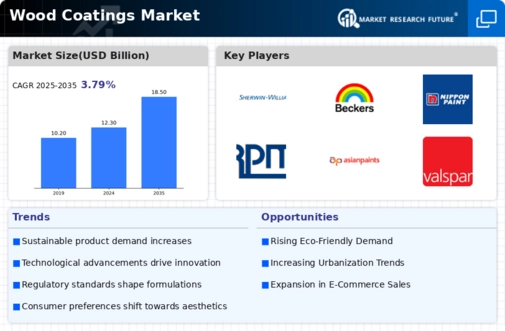
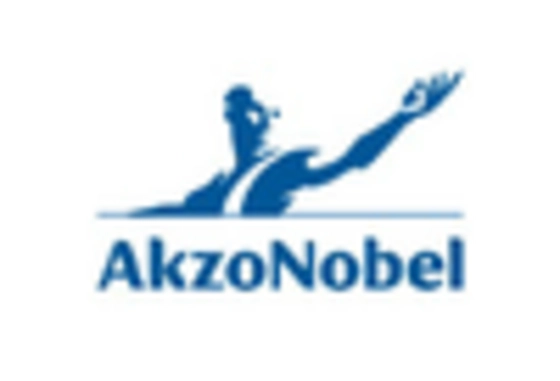

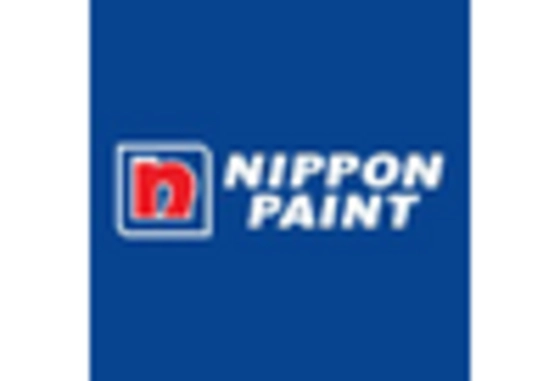
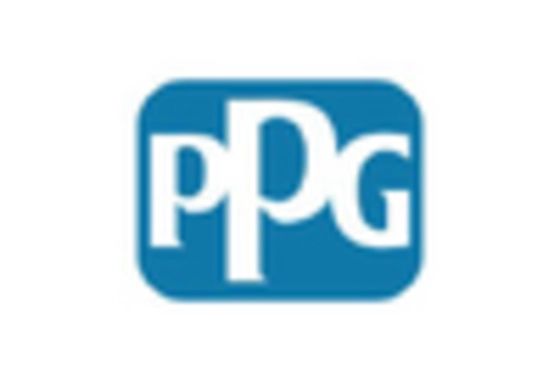
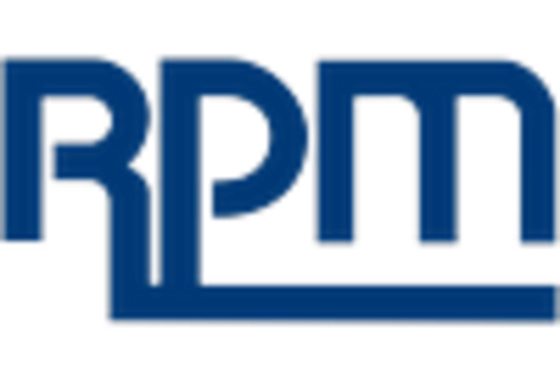
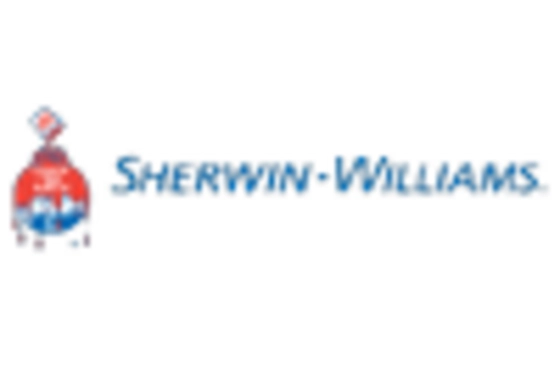

Leave a Comment